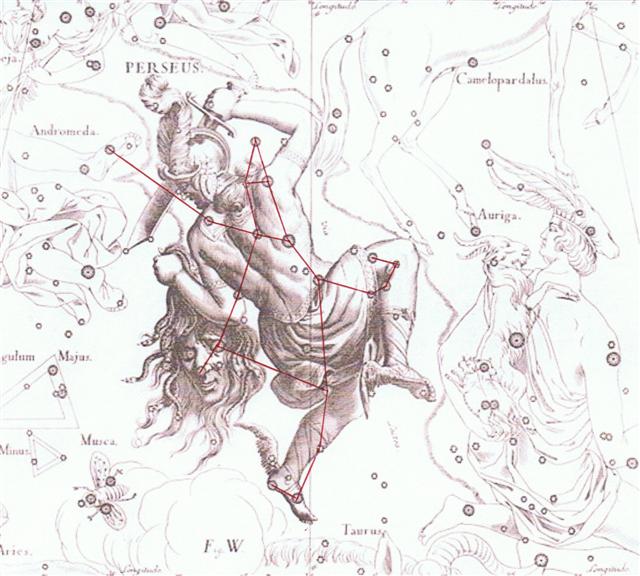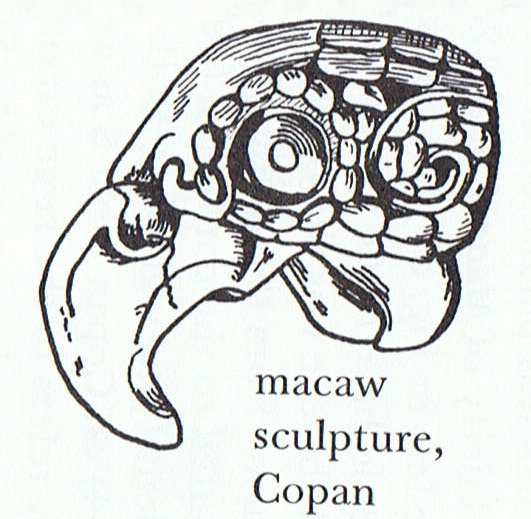386. The Lono
circuit on Hawaii took 23 days and began 10 days after the return
in late autumn to the visibility of the Pleiades. Looking 10 days
earlier than Algol at Gb8-12 we
will, however, not find the autumnal reappearance of the
Pleiades because the G text was evidently oriented towards the
other side of the equator. Nevertheless is Gb8-2 (214 = 224 - 10
= 210 + 4) an exceptional glyph:
|
Sumerian
SAG |
 |
Phoenician
resh |
 |
Greek
rho |
Ρ
(ρ) |
|
...
Resh
(Arabic:
rāۥ)
is
the
twentieth
letter
of
many
Semitic
alphabets,
including
Phoenician,
Aramaic,
Hebrew
...
The
word
resh
is
usually
assumed
to
have
come
from
a
pictogram
of a
head,
ultimately
reflecting
Proto-Semitic
*raۥ(i)š-.
The
word's
East
Semitic
cognate,
rēš-,
was
one
possible
phonetic
reading
of
the
Sumerian
cuneiform
sign
for
'head'
(SAG).

.jpg)
...
Then
I
become
aware
of
...
a
presence
- a
faint,
ghostly
glimmering,
like
moonglow,
that
has
appeared
on
the
solstice
stone.
I
don't
know
how
long
it
lasts,
a
second
or
two
only
I
would
guess,
but
while
it
is
there
it
seems
less
like
a
projection
-
which
I
know
it
to
be -
than
something
immanent
within
the
stone
itself.
And
it
seems
to
function
as a
herald
for
it
fades
almost
as
soon
as
it
has
appeared
and
in
its
place
the
full
effect
snaps
on -
instantaneously.
It
wasn't
there,
and
then
it's
there.
As
Chris
had
described,
the
effect
does
curiously
resemble
a
poleaxe,
or a
flag
on a
pole,
and
consists
of a
'shaft',
narrow
at
the
base
but
widening
a
little
towards
the
top,
running
up
the
left
hand
side
of
the
solstice
stone,
surmounted
by a
right-facing
'head'
or
'flag'.
An
instant
later
an
almond-shaped
spot
of
light,
like
an
eye,
appears
a
few
centimeters
to
the
right
of
the
'flag'
and
the
effect
is
complete.
Weirdly
- I
do
not
claim
it
has
any
significance
-
this
flag-on-a-pole
symbol
is
the
ancient
Egyptian
hieroglyph
neter,
meaning
'god',
or
'a
god'
-
and
not
to
be
understood
at
all
in
the
Judaeo-Christian
usage
of
that
word
but
rather
as a
reference
to
one
of
the
supernatural
powers
or
principles
that
guide
and
balance
the
universe.
Manifested
here,
in
this
strange
Stone
Age
temple,
it
glows,
as
though
lit
by
inner
fire
...

Marija
Gimbutas:
'To
sleep
within
the
Goddess's
womb
was
to
die
and
to
come
to
life
anew'.
In a
system
of
reincarnation
the
old
one
must
die
in
order
to
be
reborn,
of
course.
At
midsummer
Sun
comes
to a
standstill,
and
this
must
therefore
be
an
occasion
when
the
'flame
of
life'
had
to
be
transported
into
a
new
body. |
|
2-14 (45
= 60 -
15) |
2-15 (☼327) |
2-16
(365 +
47 =
412) |
2-17 (14
* 29˝) |
2-18
(414) |
19 |
3-10 (☼350) |
|
MARCH 1
(*345) |
2 (61) |
3 (427 =
☼343
+ 84) |
4 (*348
= 12 *
29) |
5 (8 *
8) |
25 (☼359
+
☼6) |
 |
 |
 |
 |
 |
 |
|
Gb8-11 |
Gb8-12 |
Gb8-13
(454) |
Gb8-14
(214 +
12) |
Gb8-15
(227 → π) |
Ga1-4 |
|
MENKAR
(The
Nose) =
α Ceti
(44.7) |
3h
(45.7)
GORGONEA
TERTIA =
ρ Persei
(45.1),
ALGOL
(The
Demon) =
β Persei
(45.9) |
ι
Persei
(46.1),
MISAM
(Next to
the
Pleiades)
=
κ
Persei
(46.2),
GORGONEA
QUARTA =
ω
Persei
(46.7),
BOTEIN
(Pair of
Bellies)
=
δ
Arietis
(46.9) |
ζ
Arietis
(47.7) |
ZIBAL
(Young
Ostriches)
= ζ
Eridani
(48.0),
κ Ceti
(48.9) |
Rohini-4
(The Red
One) /
Pidnu-sha-Shame-4
(Furrow
of
Heaven)
/
ANA-MURI-2
(Rear
pillar -
at the
foot of
which
was the
place
for
tattooing)
ALDEBARAN
= α
Tauri
(68.2),
THEEMIN
= υ˛
Eridani
(68.5) |
|
May 4
(*409) |
5 (*45) |
6 (491) |
7 (12 *
41) |
8 (*48 =
148 -
100) |
28 (148) |
|
°April
30 |
°May 1
(*41) |
2 (487 =
464 +
23) |
3 (8 *
61) |
4 (*44 =
144 -
100) |
24 (144) |
|
'April 7
(*382) |
8 (*18) |
9 (464) |
10 (5 *
93) |
11 (*21
= 121 -
100) |
'May 1
(121) |
|
"March
24
(*368) |
Julian
equinox |
26 (450) |
27 (11 *
41) |
28 (*7 =
107 -
100) |
"April
17 (107) |
|
... The
correspondence
between
the
winter
solstice
and the
kali'i
rite of
the
Makahiki
is
arrived
at as
follows:
ideally,
the
second
ceremony
of
'breaking
the
coconut',
when the
priests
assemble
at the
temple
to spot
the
rising
of the
Pleiades,
coincides
with the
full
moon (Hua
tapu)
of the
twelfth
lunar
month (Welehu). In
the
latter
eighteenth
century,
the
Pleiades
appear
at
sunset
on 18
November.
Ten days
later
(28
November),
the
Lono
effigy
sets off
on its
circuit,
which
lasts
twenty-three
days,
thus
bringing
the god
back for
the
climactic
battle
with the
king on
21
December,
the
solstice
(=
Hawaiian
16
Makali'i). The
correspondence
is
'ideal'
and only
rarely
achieved,
since it
depends
on the
coincidence
of the
full
moon and
the
crepuscular
rising
of the
Pleiades
... |
| Manacle |
ziqq |
Phoenician zayin |
 |
Greek zeta |
Ζ (ζ) |
|
... Zeta (uppercase Ζ, lowercase ζ; Greek: ζήτα ... is the sixth letter of the Greek alphabet. In the system of Greek numerals, it has a value of 7. It was derived from the Phoenician letter Zayin. Letters that arose from zeta include the Roman Z and Cyrillic З ...
Zayin (also spelled Zain or Zayn or simply Zay) is the seventh letter of many Semitic abjads ... It represents the sound [z]. The Phoenician letter appears to be named after a sword or other weapon. (In Biblical Hebrew, 'Zayin' means sword, and the verb 'Lezayen' means to arm. In modern Hebrew, 'zayin' means penis and 'lezayen' is a vulgar term which generally means to perform sexual intercourse and is used in a similar fashion to the English word fuck, although the older meaning survives in 'maavak mezuyan' (armed struggle) and 'beton mezuyan' (armed, i.e., reinforced concrete). The Proto-Sinaitic glyph according to Brian Colless may have been called ziqq, based on a hieroglyph depicting a 'manacle'.


|


Counting ahead from
the beginning of
side a, instead of
from the end of side
b and backwards
among the glyphs, the
unique reversed
manu rere will
be perceived to be
at another place
than what was
documented above:
... At the time of rongorongo the day May 28 (148, *68) was where Aldebaran rose with the Sun and 77 days later, in August 13 (225, *145) the Sun had reached the Knot (Ukdah) with the Full Moon at the Foundation (Bunda) ...
| First 3-stone place: |
| MARCH 18 |
19 (☼359) |
20 (*364) |
 |
 |
 |
| Gb8-28 (240) |
Gb8-29 |
Gb8-30 (☼59) |
| May 21 (141) |
*62 |
*63 |
| "April 10 (100) |
11 |
12 |
| Itzam-Yeh (7-Macaw, Ursa Major) defeated |
28 May, 3149 BC (148) |
| First 3-stone place |
21 May, 3114 BC (141) |
| Creation of our present world |
13 Aug, 3114 BC (225) |
| Hun-Nal-Ye became the sky |
5 Febr, 3112 BC (36) |
|
21 May, 3114 BC - 13 August, 3114 BC = 225 - 141 = 84 (= 12 * 7)
21 May, 3114 BC - 5 February, 3112 BC = 542, which 'happens to be' the sum of 365 days and 6 * 29˝ nights.
At the time of rongorongo the day May 28 (148, *68) was where Aldebaran rose with the Sun and 77 days later, in August 13 (225, *145) the Sun had reached the Knot (Ukdah) with the Full Moon at the Foundation (Bunda). |
 |
|
| 4 |
MARCH 25 (84) |
330 |
FEBR 19 (50) |
110 |
JUNE 10 (161 = 77 + 84) |
 |
 |
 |
| Ga1-4 |
Gb4-15 (335) |
Gb8-5 (446) |
| Aldebaran |
no star listed (34) |
Ukdah (Knot) |
| May 28 (*68) |
April 24 (*399 = *34) |
Aug 13 (141 + 84 = 225 = 590 - 365) |
| "April 17 (107) |
"March 14 (73) |
"July 3 (*104) |
| *250 = *68 + 182 |
*216 = *34 + 182 |
Bunda (*327 = *145 + 182) |
.jpg)
... The month, which takes its name from Juppiter the oak-god, begins on June 10th and ends of July 7th. Midway comes St. John's Day, June 24th, the day on which the oak-king was sacrificially burned alive. The Celtic year was divided into two halves with the second half beginning in July, apparently after a seven-day wake, or funeral feast, in the oak-king's honour ...
|

.jpg)








.jpg)